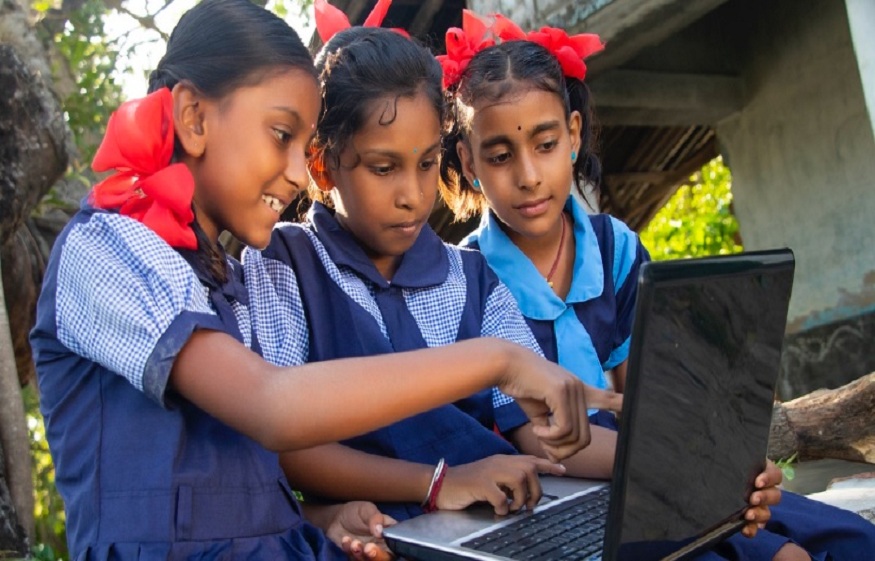On the occasion of COP16, experts and participants gathered to discuss various themes such as eco-anxiety, green pedagogy, youth engagement and the fight against climate misinformation.
This session dedicated to English-speaking teachers and educators from around the world, offered a space for collective reflection to integrate environmental education into school practices and support young people in their ecological awareness.
Sophie Palmer , Marketing and Outreach Coordinator at Zen and the Art of Saving the Planet, opened the discussion by addressing eco-anxiety, a growing phenomenon among young people who feel powerless in the face of environmental crises. She explained the importance of openly discussing the emotions surrounding the climate crisis, and encouraged teachers to provide a space for listening in their classrooms. This would ensure that this anxiety does not become a barrier to learning.
The key to alleviating this anxiety? Active, non-judgmental listening and an optimistic approach to showing students that they have the power to make a meaningful difference.
Marketing and Outreach Coordinator at Zen and the Art of Saving the Planet
The discussion then turned to practical teaching methods with Bernard Combes , a specialist in the Education for Sustainable Development Programme at UNESCO. The expert stressed the importance of an interdisciplinary approach, illustrated by examples such as the creation of school gardens and nature journaling , which bring students closer to nature while developing their academic skills. He also stressed the need to involve local communities and foster collaboration between students.
His talk prompted many questions from teachers about implementing these projects in urban or resource-limited environments. “ Explore nature in depth to better understand ,” he said, noting that the key is to tailor activities to students’ interests to nurture their passion for the environment.
Program Specialist in Education for Sustainable Development
In the face of today’s environmental challenges, how can we mobilize young people to “green” our institutions? Andrés Pablo Lemoine , program manager for Roots & Shoots Global at the Jane Goodall Institute , then shared ideas for encouraging young people to get involved in environmental projects. By participating in local actions, even modest ones, students develop a sense of accomplishment and belonging. The expert suggested asking students about the origin of everyday objects and thinking about local production systems as well as consumption alternatives.
Teachers raised crucial questions, including what can teachers do in the daily life of the school to raise awareness among students about the environment? How can we stimulate this engagement and involve families and communities at a local level? Encouraging steps towards collective mobilization for a better future.
Roots & Shoots Global Program Manager at the Jane Goodall Institute
In this perspective of collective mobilization, Olivia Copsey , Director of Education at the Foundation for Environmental Education , highlighted the need for a global approach to transform schools into eco-responsible establishments. To achieve this, the involvement of all stakeholders—governance, teaching methods, students and local communities—is crucial. By giving active roles to students, particularly through projects such as installing school vegetable gardens or sorting waste, they become real drivers of change.
Teachers also raised questions about the best ways to integrate these initiatives into the school curriculum while maximizing their impact.
In this regard, UNESCO is committed to developing quality standards for green schools , an essential step towards sustainable and effective environmental education.
As an extension of these educational initiatives, the issue of access to reliable information is emerging as a major challenge, particularly in the face of the rise of false information on environmental issues. Our last speaker, Jay Ralitera , UNESCO expert in Media and Information Literacy (MIL) in Nairobi, discussed the growing misinformation on social media, where the majority of young people get their information. She clarified the concepts of disinformation, misinformation and malinformation, highlighting their impact on the understanding of climate issues.
Among the solutions for discerning information: verify the quality of sources, favor recognized scientific publications, be wary of sensationalist content and cross-reference information. On this theme, UNESCO supports the development of the concept of media and information literacy and the importance of climate change education . The educational tool “Think Critically, Click Wisely” developed by UNESCO can also support teachers, educators and students in exercising media vigilance.
Communication Information Project Officer, UNESCO Nairobi Office
Thus, the enthusiastic participation of teachers in this Masterclass highlighted their essential role in the environmental education of young people. These two hours of discussions revealed a strong consensus: a collective approach, where teachers, students and communities join forces, is the key to building a more sustainable future. Being creative and flexible, giving students time to engage, cultivating their critical thinking and encouraging their ability to act are all ways to support them on the path to change.


